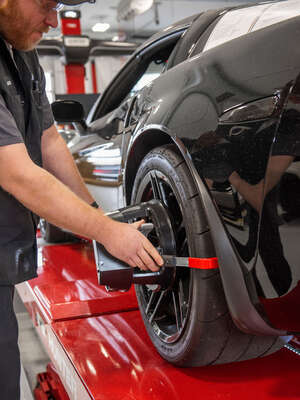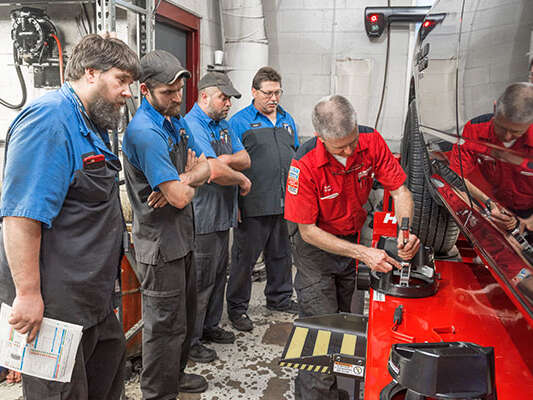Calibrate ADAS using aftermarket or OEM solutions. Hunter offers quality ADAS Calibration tools and equipment for any shop.
Performing a Steering System Reset
Over 140 million vehicles on the road today, approximately 45% across North America, require a reset/recalibration of the steering angle sensor (SAS) following a wheel alignment, as instructed by the vehicle's manufacturer on certain equipped cars. This number will continue to grow, since all vehicles produced for USA consumption since 2012 are equipped with SAS.
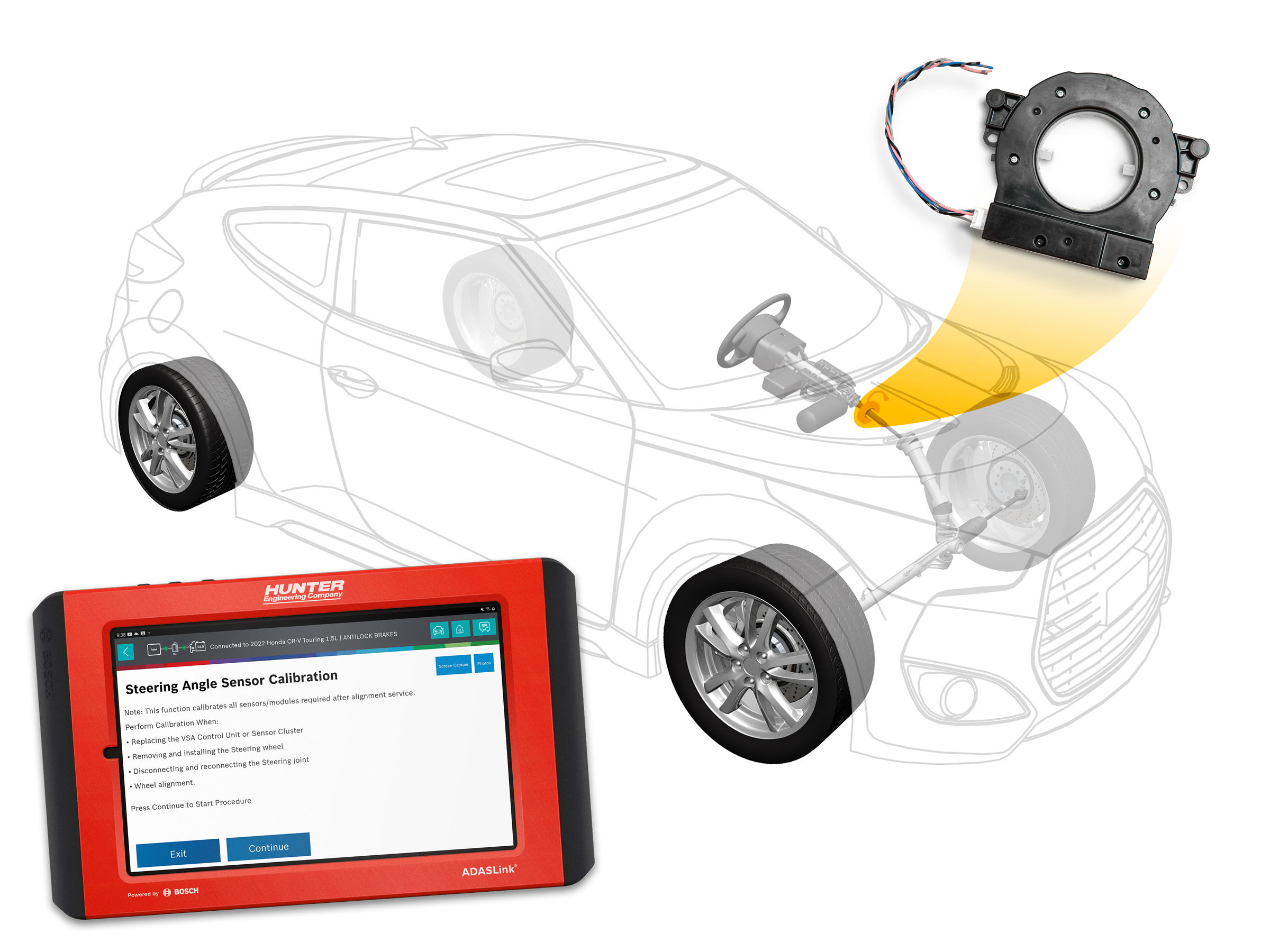
What is a Steering Angle Sensor?
Steering angle sensors are the connection between the driver's steering — which direction, how much, how quickly — and the vehicle's computer system to determine how the vehicle reacts. They are a core component to vehicle and driver safety, helping to maintain stability and control.
Steering angle sensors send information to various vehicle systems, if equipped. Most notably, Electronic Stability Control (ESC) relies on this information to ensure control of the vehicle during sudden, harsh movements. ESC helps avoid crashes and rollovers caused by oversteering or understeering a vehicle. It measures the driver input and compares it to the lateral force, yaw rate and individual wheel speed of the vehicle.

Other Advanced Driver Assistance Systems (ADAS) rely on the vehicle's SAS data to provide additional drive benefits:
- Lane Keep Assist (LKA) to ensure the vehicle remains within the lane markings
- Blind Spot Monitoring (BSM) to notice if the driver is steering toward an obstruction in the blind spot
- ...and more
How are steering angle sensors reset?
Since 2009, Hunter’s CodeLink® has provided a simple, integrated solution that addresses reset requirements per specific OEM "linking" of the vehicle OBD-II system to the Hunter WinAlign® aligner to calibrate safety system-related sensors to the vehicle’s alignment geometry.
Today, the Hunter ADASLink® diagnostic scan tool provides this capability and more in an easy-to-use tablet interface. As you identify the vehicle, Hunter WinAlign® wheel alignment equipment immediately informs the technician if a steering system reset is required, then guides the technician step by step through the entire wheel alignment and steering system reset process.
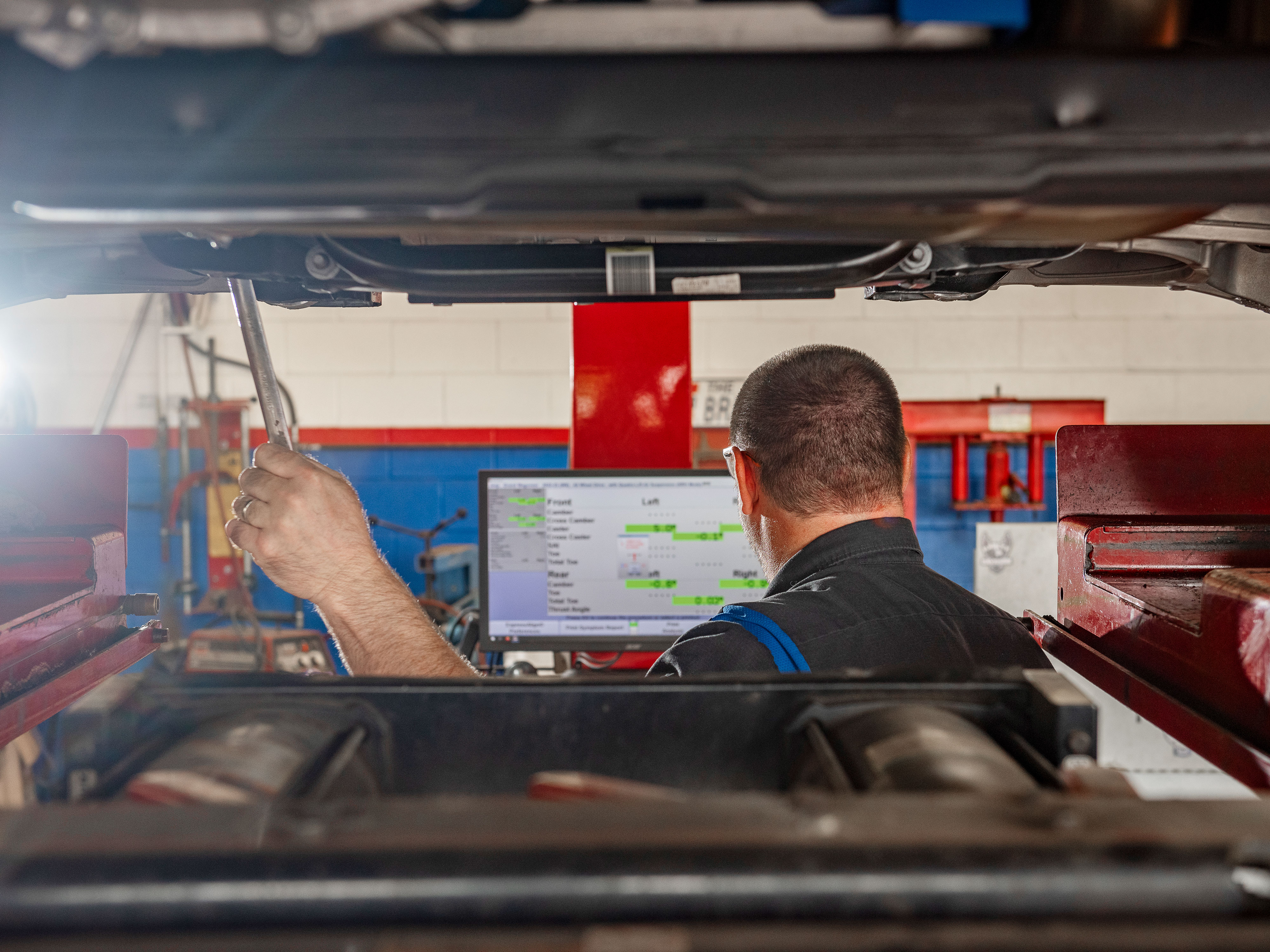
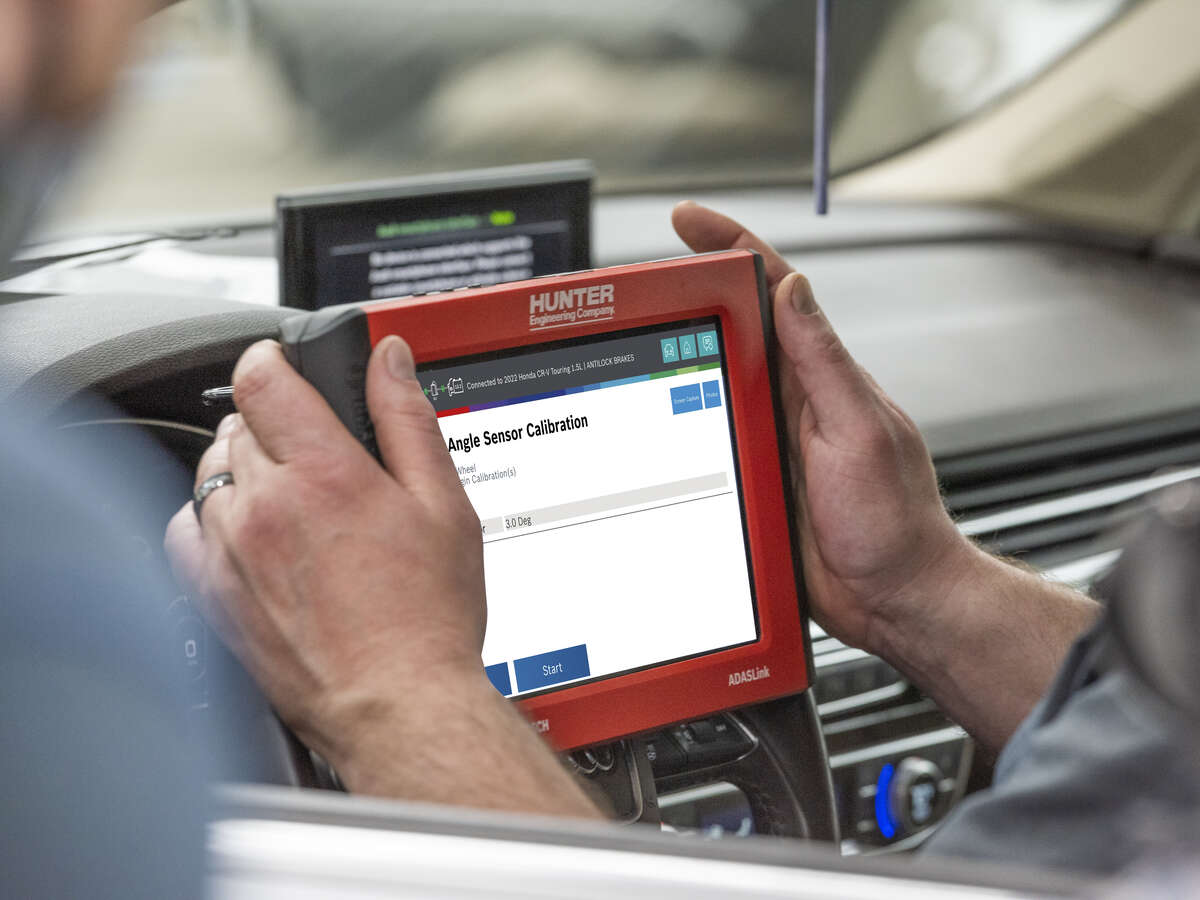
Once the mechanical alignment adjustments are complete, the technician will be prompted to perform the steering system reset to match the vehicle's new thrust line. A complete steering angle sensor reset on some vehicles includes additional sensors, such as torque angle sensor or yaw rate sensors. A steering angle reset has become a necessary last step in a wheel alignment.
Perform a post-scan using ADASLink® and provide proof-of-work documentation to ensure that the vehicle is properly aligned.
ADASLink® ships with select Hunter WinAlign® alignment systems packages or can be purchased separately. See all the features of Hunter ADASLink®.
See how it's done.
Alan Hagerty, Product Manager for Alignment Systems at Hunter Engineering, explains how easy it is to use the integrated features of WinAlign® and ADASLink® together to perform a steering system reset.
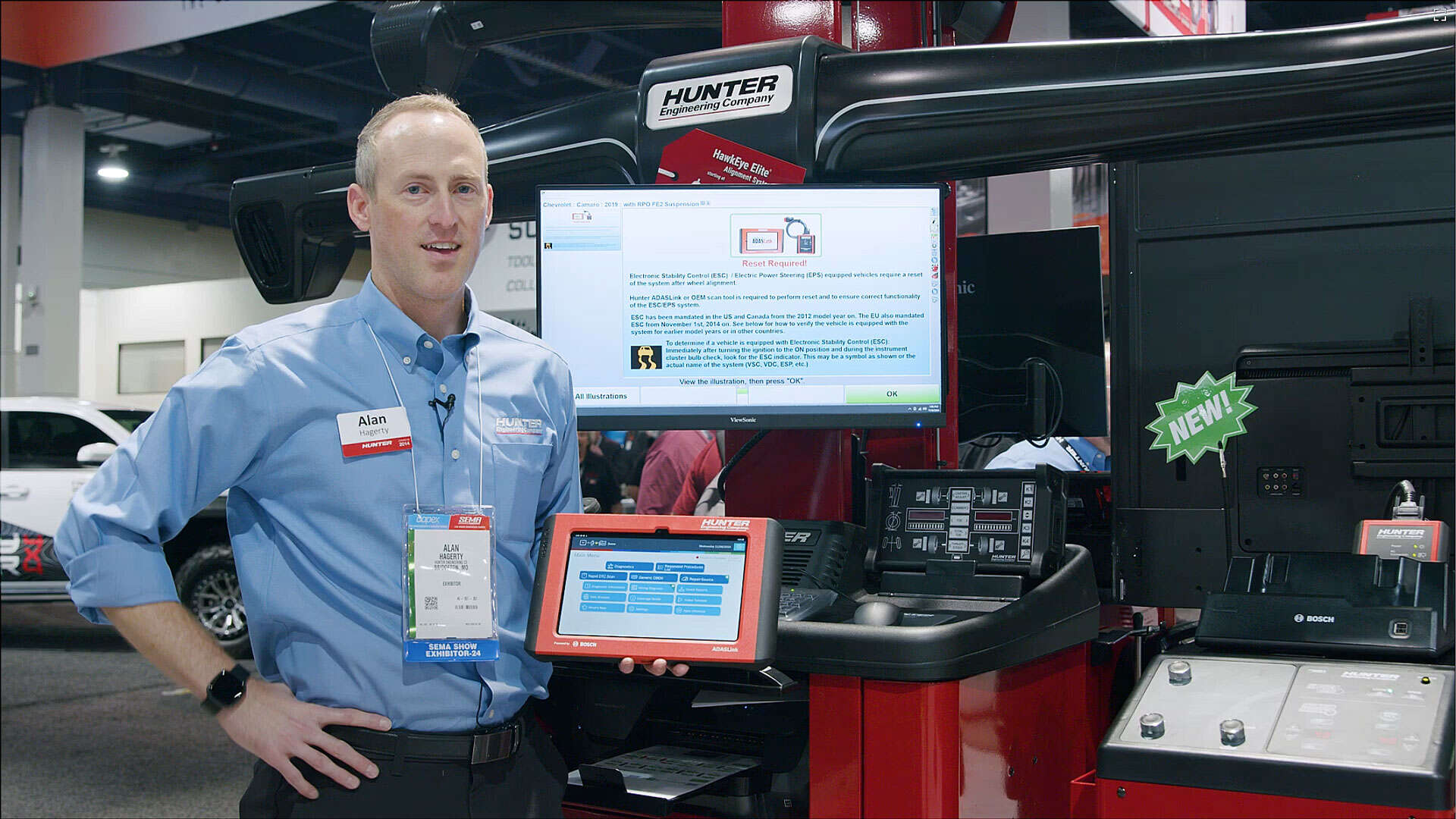
Hunter ADASLink® — the comprehensive SAS and ADAS tool
Quickly perform and document steering system resets after an alignment.
Easily fit dynamic ADAS calibrations and test drives into your service offerings.
Analyze vehicle systems with comprehensive pre- and post-scans.
Access OEM secure gateways.
Diagnose trouble codes, run special tests, code/pair new parts and more...
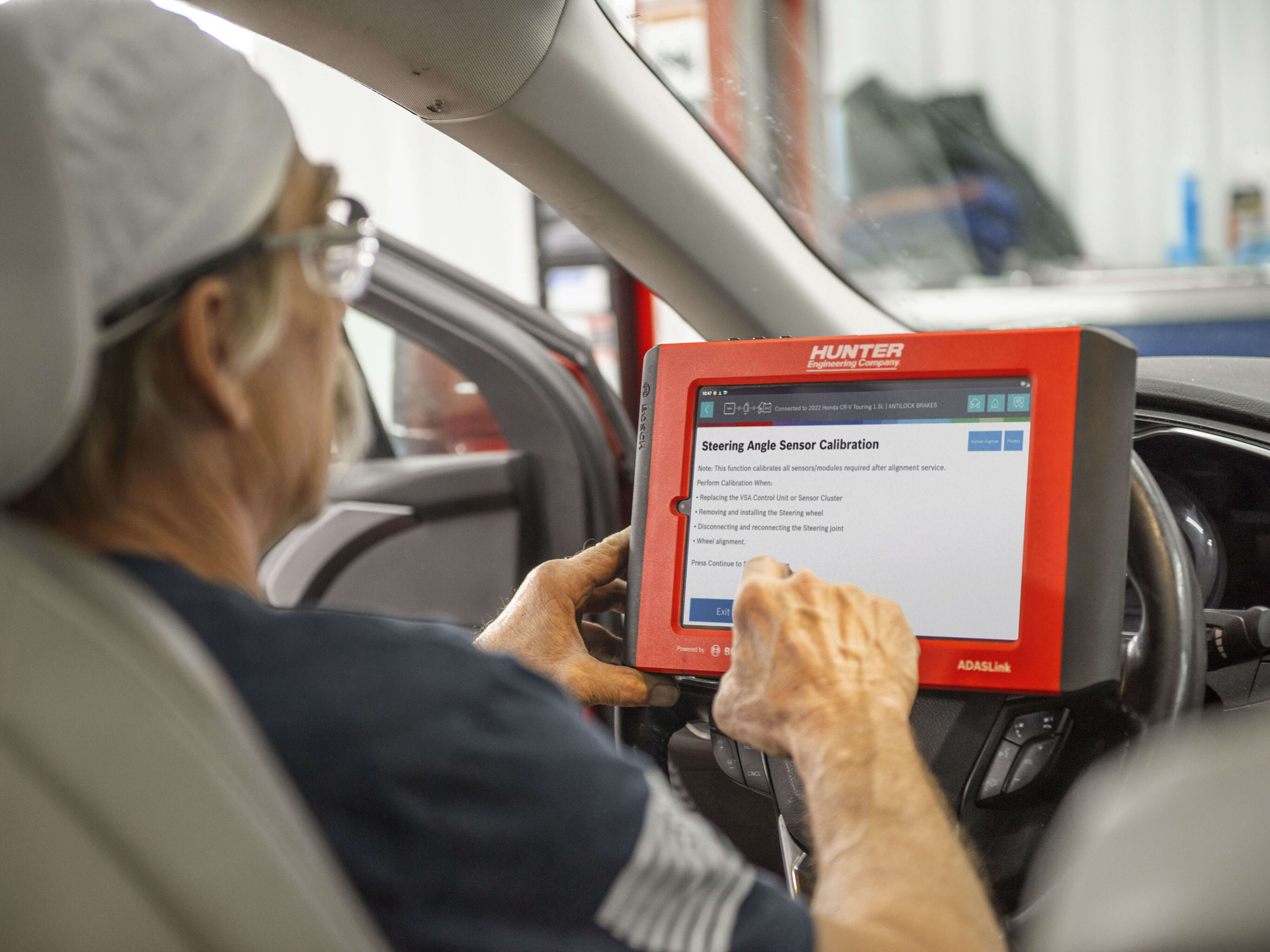

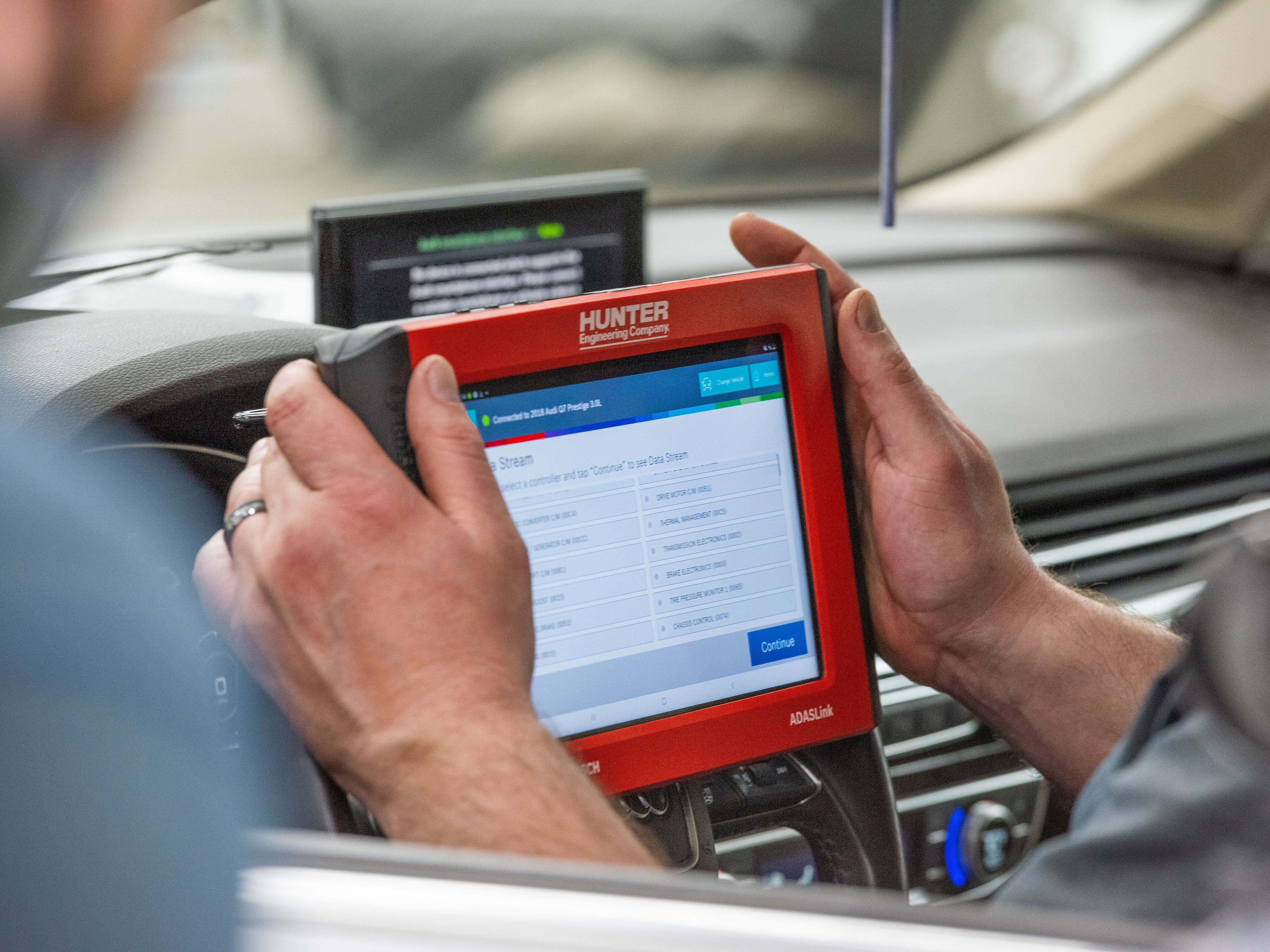
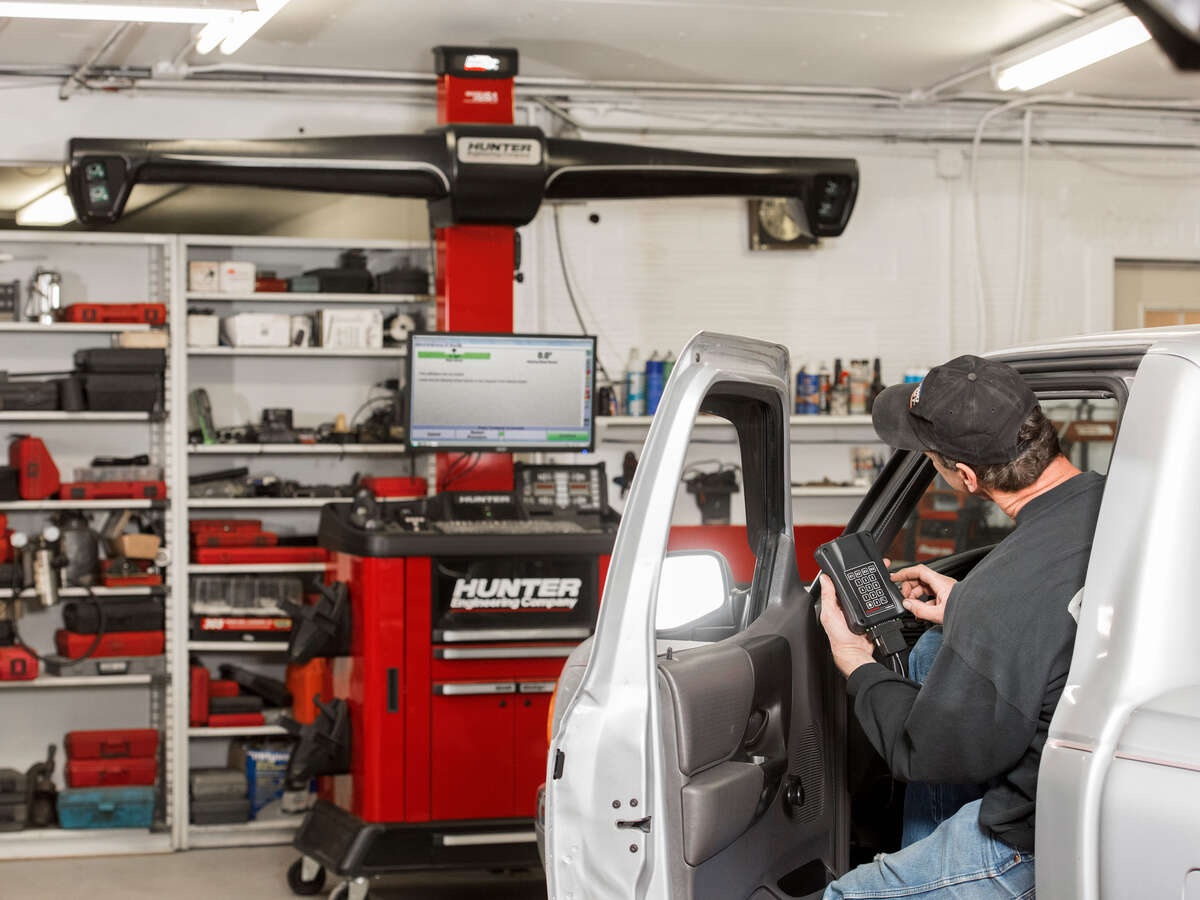



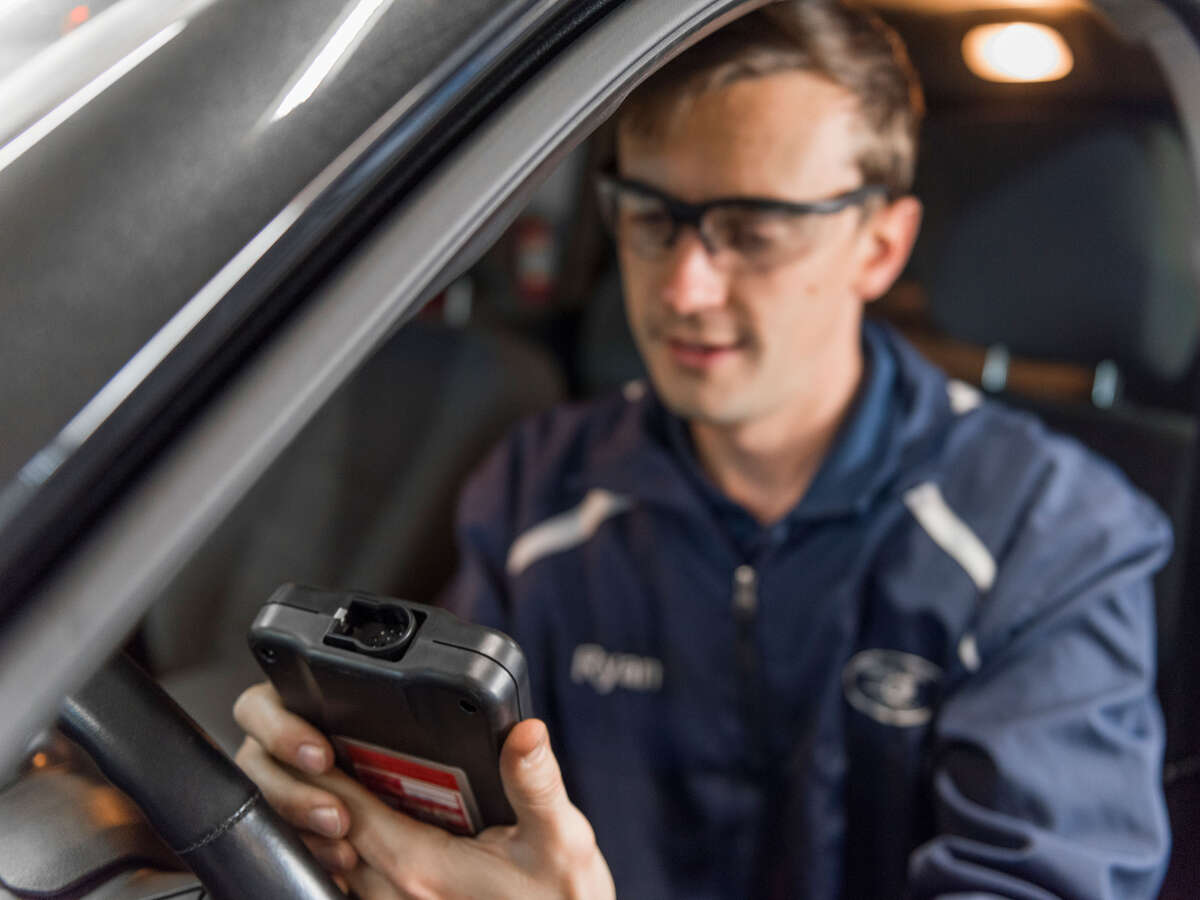

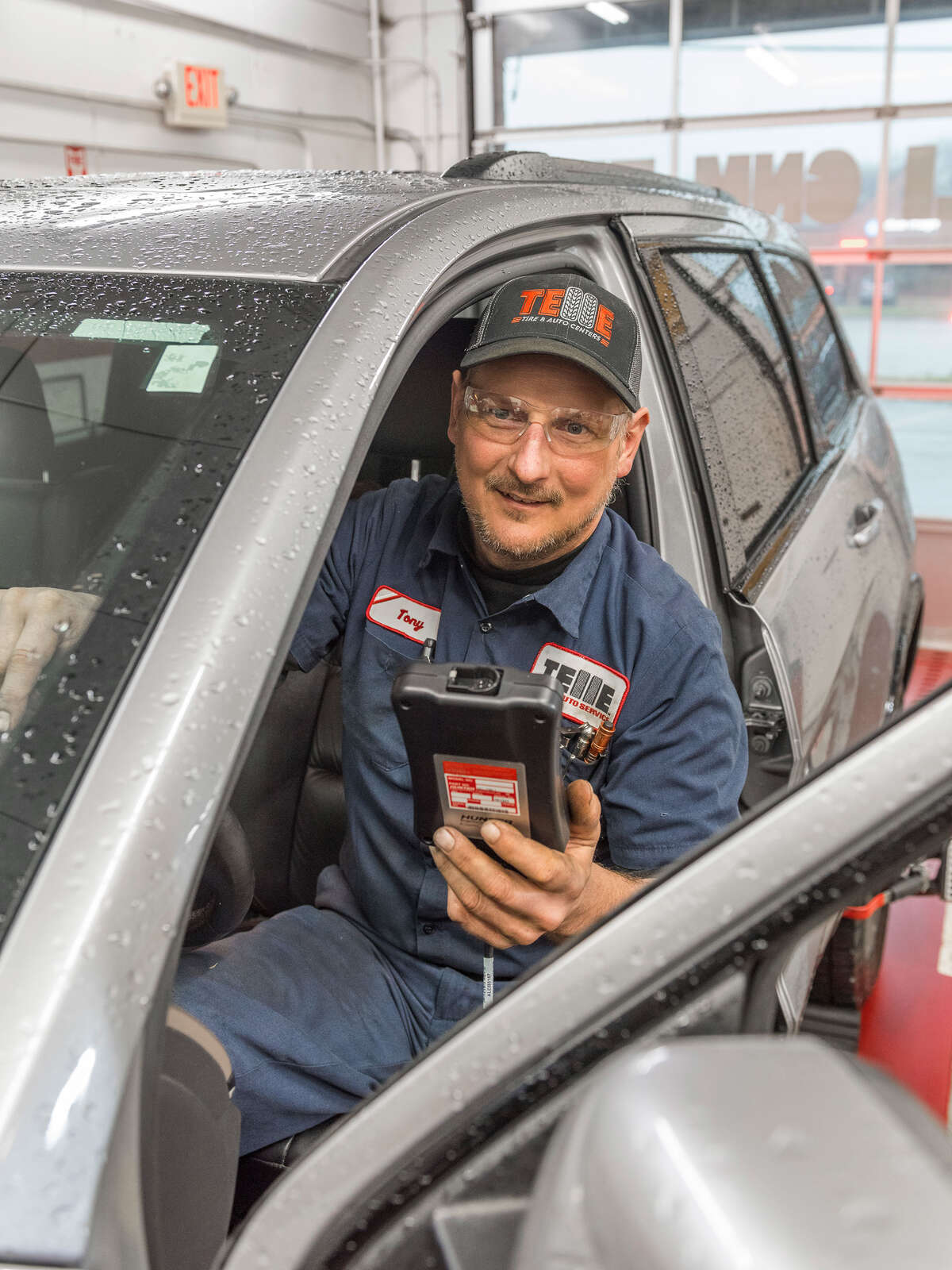

Did you know?
Failure to perform a safety system alignment when required may impact the proper operation of electronic driver-assist systems.
After a wheel alignment, the position of the steering angle sensor is unknown, prompting many OEMs to now require safety system alignments or safety system resets.
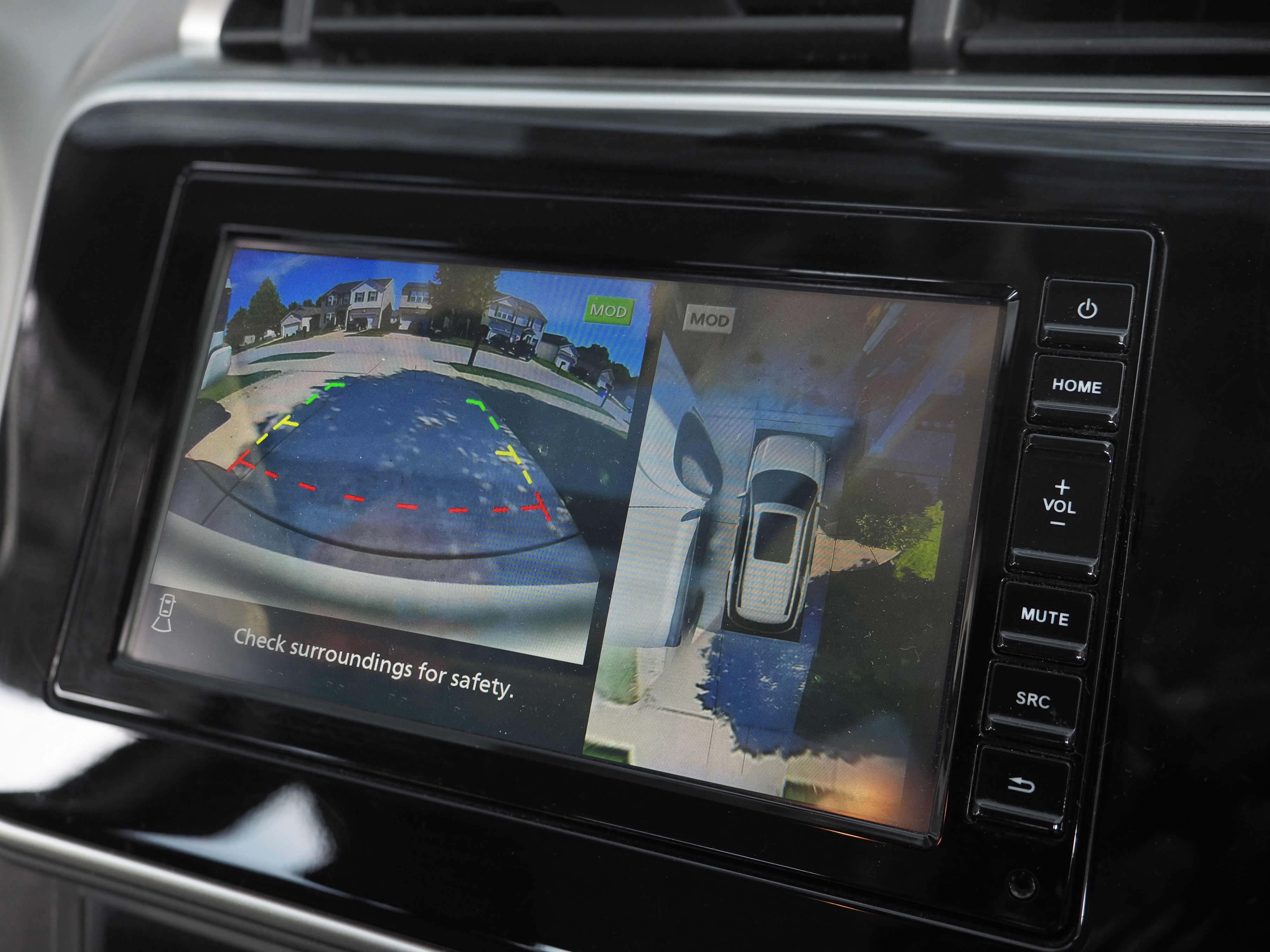
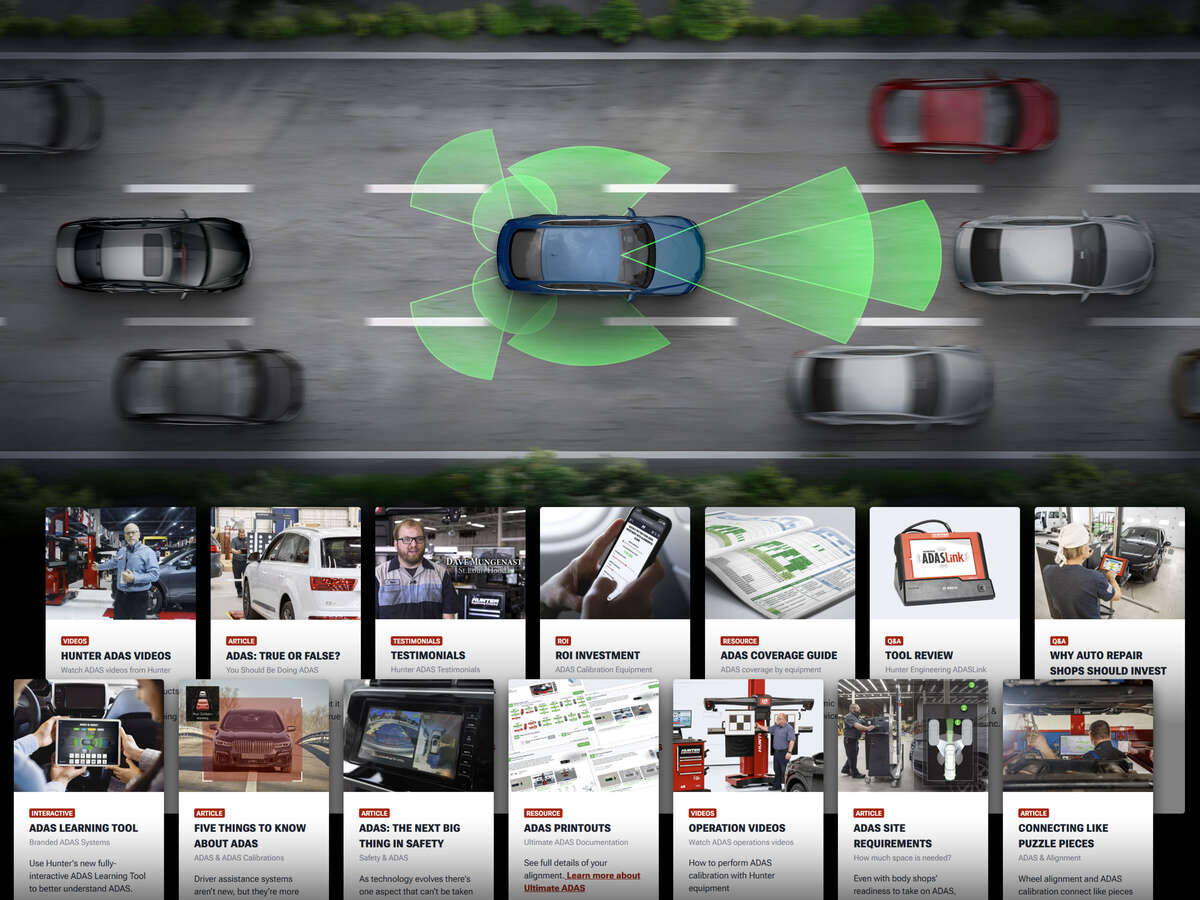
Expand your knowledge and awareness on Advanced Driver Assistance Systems (ADAS) with articles, videos, interactive tools, and downloads.





